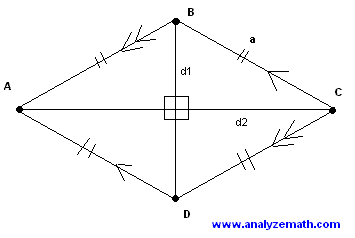In a given quadrilateral, each side is parallel to its opposite side and the diagonals are not perpendicular. What could it be?
1 Answer
May 8, 2016
Rhombus
Explanation:
Assume a quadrilateral
Given that
Also given that

If opposite sides of a quadrilateral are parallel, it's a parallelogram.
In a parallelogram diagonals intersect at their midpoints - let it be point
Consider now triangles
They are right triangles (since diagonals are perpendicular) and have two correspondingly congruent catheti:
Therefore,

